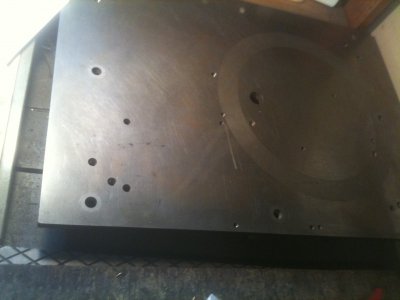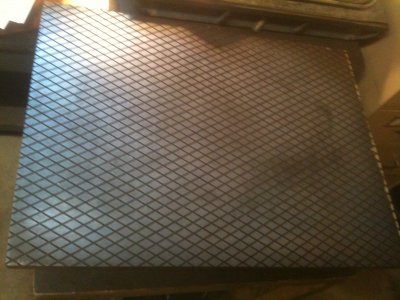- Joined
- Dec 6, 2012
- Messages
- 2,708
I made my statement from a Metrologist viewpoint. It's probably far beyond the real requirements for machine scraping, but if you are buying a surface place for use as an inspection tool, you should know what you are getting. All I was really saying is that the average guy can't calibrate a surface plate. I can't, that's for sure. But I do know how it's done, and have had it done many, many times.
http://www.hudler.org/pub/HP/02-5952-0820 - App Note 156-2 - Calibration of a Surface Plate.pdf
Great article. Actually makes sense to me!
Measured my plate: 16x22 was $10 at the garage sale. To me the surface plate seems to be in good shape except for the visible wear marks.
The lapping plate is 18x24. I was working in the shop late one night last winter when there was a knock on the garage door. Guy said they were throwing it out at work, he heard I was into old and outdated stuff. Did I want it? He couldn't see it going for scrap. The lap plate looks nearly unused to my untrained eye.
I have so much to learn!


